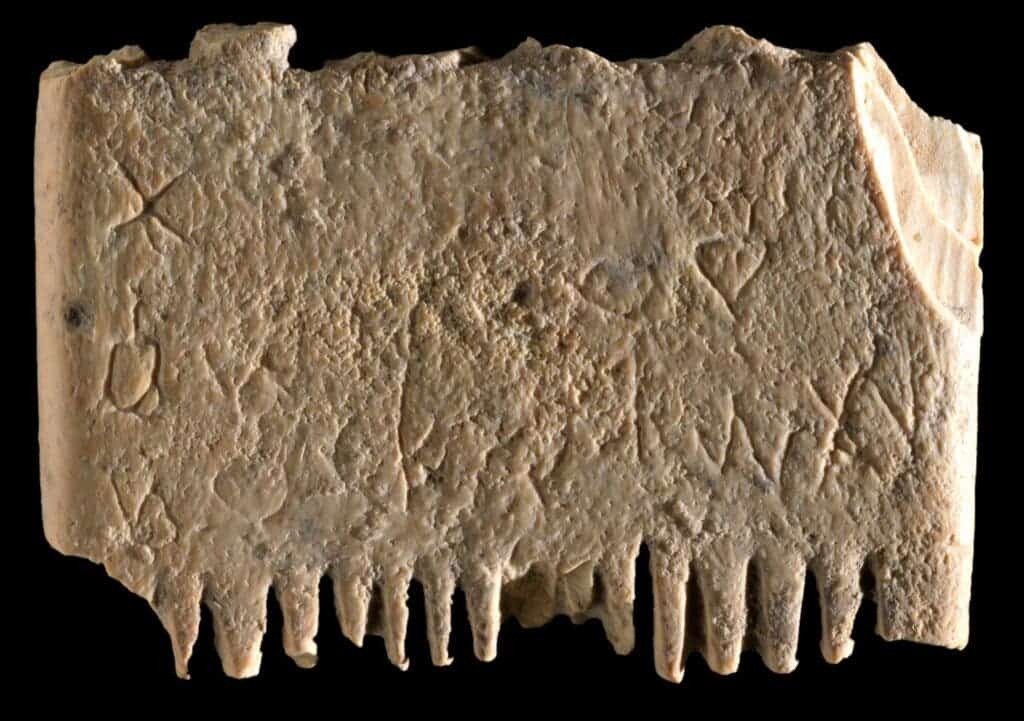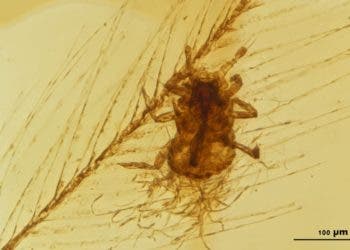A small ivory comb first discovered in 2017 in Israel has revealed a further surprise: the first-ever engraving of a whole sentence in Canaanite.

The world today would be unrecognizable without the alphabet; in fact, we like the idea so much, that we’ve developed several of them over the centuries in various parts of the world. Through that process, we’ve lost touch with older alphabets, as they evolved into the shapes and signs we use today. However, an ivory comb discovered over 5 years ago in Israel is giving us one of our best glimpses of the Canaanite alphabet, the first true alphabet ever anywhere on the planet, and one that stood the test of time and is still in use today.
The comb bears an inscription, a full sentence, engraved in shallow marks over its surface. Although fragments of Canaanite script have been found in other parts of the Land of Israel, these are exceedingly rare, and only isolated words remain readable. As such, this is our first true glimpse of a whole sentence written by the Canaanite peoples. The inscription is most likely a spell against lice, although it could be interpreted as instructions on how to use the comb.
To ward off lice
“This is the first sentence ever found in the Canaanite language in Israel. There are Canaanites in Ugarit in Syria, but they write in a different script, not the alphabet that is used till today,” explains Yosef Garfinkel, a Professor of Prehistoric Archaeology and of Archaeology of the Biblical Period at the Hebrew University of Jerusalem (HU) and corresponding author of the paper.
“The Canaanite cities are mentioned in Egyptian documents, the Amarna letters that were written in Akkadian, and in the Hebrew Bible. The comb inscription is direct evidence for the use of the alphabet in daily activities some 3700 years ago. This is a landmark in the history of the human ability to write.”
The comb, fashioned from ivory, was first found at the Tel Lachish site, an ancient Canaanite and Israelite city in the Shephelah region of Israel, in 2017. However, it wasn’t until 2022 that Dr. Madeleine Mumcuoglu at HU noticed the shallow inscription during post-processing of the artifact. This inscription is made up of 17 individual letters in the archaic Canaanite form, the earliest developmental stage of the script. Put together, these form seven words.
The inscription, according to semitic epigraphist Dr. Daniel Vainstub at Ben Gurion University (BGU), reads: “May this tusk root out the lice of the hair and the beard.”
Although it doesn’t sound like much, the inscription goes a long way to filling some of the gaps in our understanding of the Canaanite culture during the Bronze Age. This is the first instance of a full verbal sentence in a dialect spoken by the Canaanite people living in and around Lachish, which gives us the chance to compare it against dialects from other areas. The small size of the letters (1-3 mm wide), together with the fact that the engraver managed to carve them out in high quality (good definition allowing for them to be read easily) provides us valuable context regarding the literacy levels achieved in Canaan in the Bronze Age.
Apart from language, the comb also helps us better understand some aspects of daily life at the time, namely hair care and how people dealt with lice.
As far as combs go, this one is quite small. It measures roughly 3.5 by 2.5 centimeters (1.3 by 1 inch), and sported teeth on both sides. We know this because their bases are still visible, although the teeth themselves have broken off. The central piece of the comb is relatively eroded, likely by repeated use over the years. One side of the comb came with 6 thick teeth and was likely used to untangle knotted hair. The other came with 14 teeth, and was likely used to remove lice and live eggs — not dissimilar to how modern combs are used.
Ivory was a rare and expensive material, seen in goods imported from outside of the area, as there were no elephants in Canaan 3,700 years ago, around the time when the comb was produced. More common materials for combs included wood and bone. This comb was probably manufactured in Egypt and brought to Cannan as a luxury item, showcasing that even the higher classes had to contend with lice.
Speaking of which, the team analyzed the comb itself to check if any lice were present on the surface. They report finding the remains of some louse heads, of around 0.5-0.6 mm in size, on the base of the second tooth in the 14-tooth row. Due to the climate of the area around Lachish, however, only the outer chitin membrane of the lice was preserved.
Lachish was one of the most important Canaanite city-states in the second millennium BC, the team explains, and the second-most important city in Judah (a kingdom mentioned in the Bible). More Canaanite inscriptions have been found in Lachish than at any other site in Israel, a testament to it being the major center for the use of the alphabet from 1800 to 1150 BC. The site is currently under conservation with the Israel Nature and Parks Authority.
The paper “A Canaanite’s Wish to Eradicate Lice on an Inscribed Ivory Comb from Lachish” has been published in the Jerusalem Journal of Archaeology.



